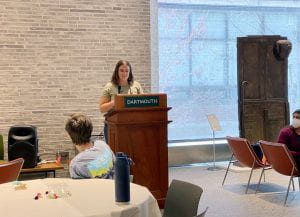
May 1st, May Day, is Lei Day in Hawai’i. Lei Day is a Hawaiian holiday that was established in Hawai’i in 1929 to celebrate Hawai’i and aloha (meaning “love”, “compassion” and “kindness”). Lei Day is an opportunity each year for the people of Hawai’i to celebrate and cherish one another and our beautiful and compassionate culture. Here on campus, the Office of Pluralism and Leadership (OPAL), the Native American Program, Dartmouth Hōkūpaʻa, and Dartmouth PRIDE collaborated to host Lei Day in the Hood Museum of Art’s Russo Atrium. Students gathered to make their own carnation and/or yarn lei, and I was invited to speak about the significance of lei and of Lei Day more broadly.
Lei making is the traditional Hawaiian practice of weaving and wearing garland adornments. They can be made of flowers, feathers, shells, seeds, and even words such as a song composed for a loved one. Lei can be made for and worn on different parts of the body including the neck, head, wrists, and ankles. A lei can figuratively refer to a beloved child, a sweetheart, or a loved one. Given as symbols of affection, lei are also a tangible expression of aloha (which can represent love, friendship, and joy). Most commonly, lei are given for celebrations such as birthdays, graduations, weddings, for greetings and farewells, or to show love, joy, or sympathy.
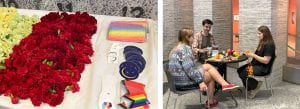
Because of the nature of lei giving practices, the process of lei making is very spiritual. In practice, we Hawaiians believe that our mana (meaning our spirit and our “divine power”) is woven into everything we create. Whether that be a lei, food, or another kind of gift. When we give someone a lei, we give them a part of ourselves, and in turn, they receive a part of us. We believe that your intentions, thoughts, and emotions must be positive and aligned with aloha as you make your lei, so that your aloha is passed on to the person that you adorn with your lei.
There is a Hawaiian Proverb or ‘Ōlelo No’eau that goes, “E lei no au i ko aloha” which translates to: “I will wear your love as a wreath.” More figuratively meaning: I will cherish your love as a beautiful adornment.
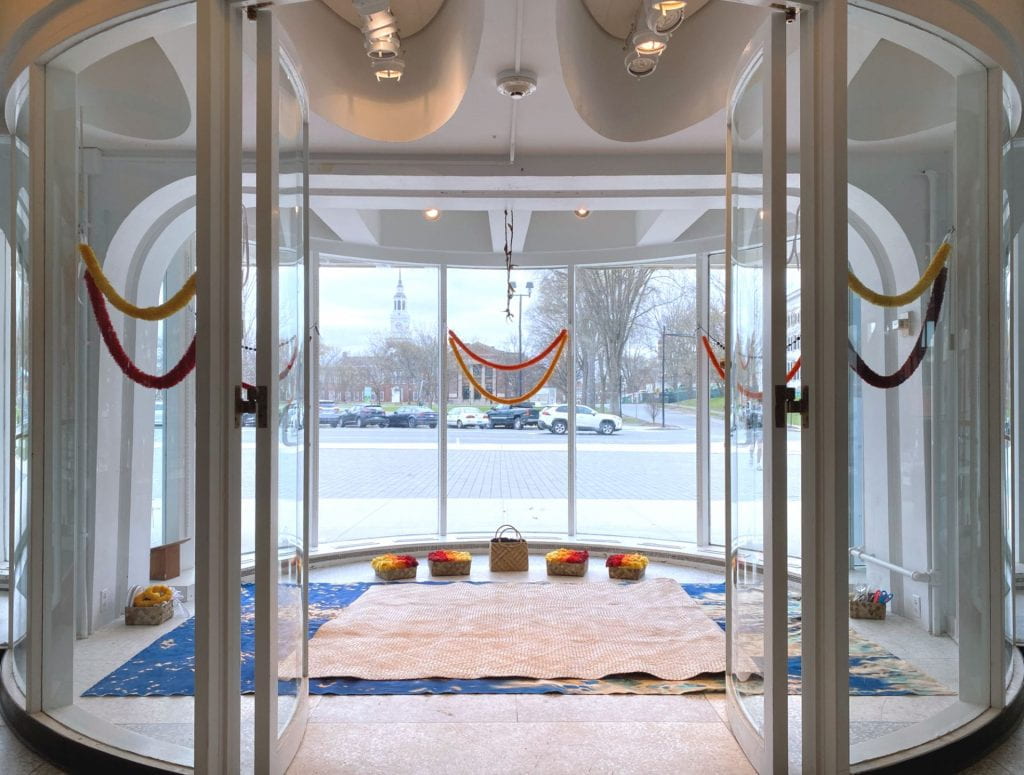
My exhibited installation, titled “e lei kākou,” is currently on view in the Barrows Rotunda (located in the Hopkins Center for the Arts) through the end of May 2022. For my exhibition, I am making yarn lei in the Rotunda throughout the month and constantly adding to the installation. A significant aspect of this project is the community contributions.
Throughout the month of May, I am hosting open studio lei making hours on Wednesdays and Sundays from 11:00 am to 2:00 pm in the Barrows Rotunda.
Through my artmaking and installation, I hope to share the significance of lei making, giving, and receiving in a way that will be very visible on campus, and live on beyond this project — when the lei that are made by the community are passed on to their loved ones. My goal is also to disrupt the campus hustle and bustle by calling on passersby to take 30 minutes out of their busy days to enter the Barrows Rotunda with me and meditate on the spiritual practice of lei making. I want this to provide an outlet for Dartmouth students through the end of the term. To give them an opportunity to recenter and take a step away from all the other stressors in their life, and to participate in this activity steeped in aloha. Finally, I wish to provide a platform for the Native Hawaiians and other Indigenous people on campus through this month-long cultural display at the center of campus.
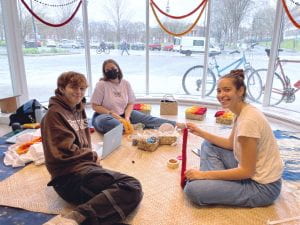
This post was authored by:
Elizabeth Nohea Coleman ’21, 2021–22 Studio Art Intern

ABOUT THE AUTHOR
Elizabeth Nohea Coleman is a Native Hawaiian artist, sociologist, and lifelong learner. She grew up on the island of O’ahu in Hawai’i and recently graduated from Dartmouth with the class of 2021. At Dartmouth, she majored in studio art and sociology, and minored in Native American studies. Since graduating, she’s worked as a Studio Art Intern in the Department of Studio Art and a Graduate Resident Fellow for the Office of Residential Life. Additionally, she is a Co-Curatorial Fellow for the Class of 1960 Black Visual Arts Center Student Gallery. Within her artistic practice, she specializes in sculpture, digital media, and large-scale installations, but considers herself an interdisciplinary artist. Drawn to emotion and connection, her work yearns to interact evocatively with many diverse communities and explore her relationship with her culture, her womanhood and sexuality, the society we live in, and the ʻāina (“land”) we inhabit. In July 2022, she will begin a masters of science program in multimedia, photography, and design at Syracuse University’s Newhouse School of Public Communications.
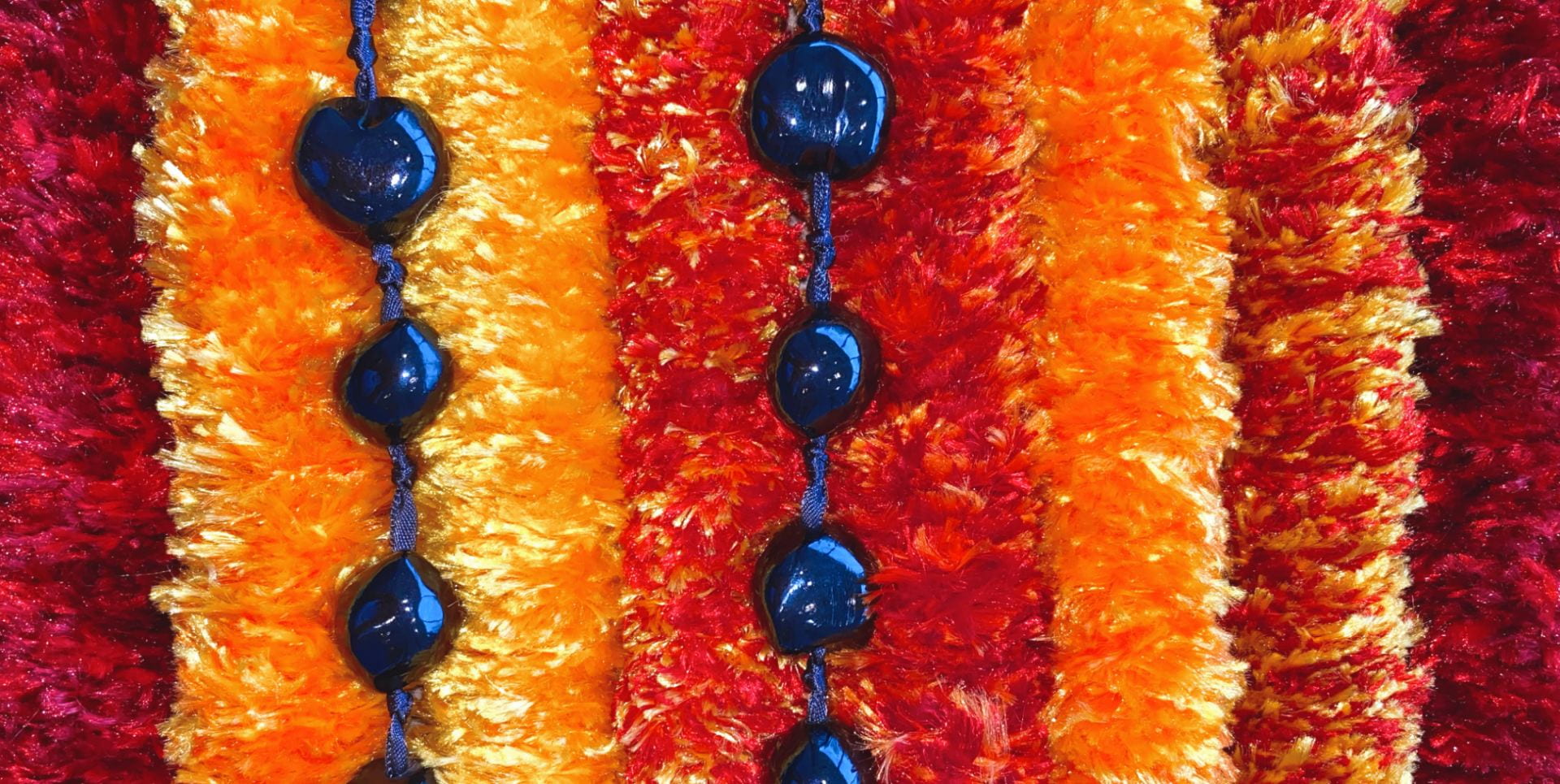
Comments are closed.